Prototype Power
A look at Whipple’s forthcoming supercharger for the 2015 Mustang GT
By SID297
Photos by StacyStangz
If you happened to stop by the SVTPerformance display at Mustang Week 2014 you probably know that we were the one-stop-shop for 2015 Mustang goodness at the show. Not only did we have the only S550 on display (Not an easy thing to pull off, BTW…) we also happened to have the little gem pictured here, Whipple Superchargers’ prototype 2015 Mustang GT Blower.

I’m sure most of you are familiar with the twin-screw awesomeness that is the 2.9-liter Whipple. That particular head unit has powered many 5.0-liter Mustangs to sub-10-second ETs and 800-plus-rwhp numbers. Well, the fine folks at Whipple were kind enough to send over this partially 3D printed, rapid-prototype version of the company’s 2015 Coyote kit for our inspection.
Upon first glance it is instantly apparent that Whipple made a concerted effort to use every cubic centimeter of space in the engine valley. The result is a lower manifold with basically the largest volume as possible. That should certainly help with power production. However, the 800-pound-design-aspect-gorilla in the room has to be the switch from the traditional (for Mustangs) front-drive/rear-entry setup to the new front-entry/jack-shaft setup on the 2015 kit.
According to Dustin Whipple, the changes were made for the following reasons…

“With the newer body styles and shrinking hood lines, we decided we did not want to sacrifice performance with the later vehicles by shrinking the inlets and intercooler sizes. We also extensively studied the flow path of the air, finding that the front inlet has less inlet losses than rear feeds in most applications,†he explained. “While you can make a rear feed massive in some applications, such as the mid-engine Ford GT, most have severe firewall clearance issues cutting down the actual plenum volume, lowering the supercharger volumetric efficiency. When one studies the amount of ‘bends’ in an inlet system, the front feeds simply have less, which results in lower losses.â€
“The front feed also allows us to move the compressor where we want it, versus the normal, slide all the way forward and try to clear the firewall. This puts the discharge of the compressor very far forward, which requires a deflector to move the air back over the intercooler core,†he added. “Again, this makes the air do more ‘work,’ each resulting in lower efficiency levels and certainly lower effective use of the intercooler core. The front-feed compressors have near-center discharge ports, allowing for far greater distribution of air above the intercooler core and better overall air distribution to the motor.â€

“When designing the front feed, we had two choices. First was the jackshaft style and second was the rear shaft driven style. While we have designs for both and have some new product with the rear shaft driven style, the jackshaft version has by far the best efficiency level since it does not have a shaft or extra casting material around the shaft that disrupts the airflow and lowers supercharger efficiency. To make the jackshaft work the way we wanted, we designed a tapered stainless steel jackshaft that allows torsional twist as well as being significantly lighter than a solid shaft,†he explained. “To drive the supercharger, we came up with two more precision helical gears to keep noise to a minimum and offer precision operation. We also lowered the shaft centerline nearly ¾-inch to keep the supercharger pulley down, away from the shrinking hood line which allowed us to run a bigger intercooler. During testing, the jackshaft version of the W175ax compressor required less than 1.5 horsepower more to operate at peak speeds yet gained significant efficiency levels that required lower supercharger speeds, lower power consumption and lower temperatures.â€

Like the inlet, a new intercooled intake manifold was necessary.
“The previous generation intake manifold for the 5.0-liter was designed with minimal plenum volume as a main goal. With Whipple always going for maximum power, it was imperative to open the intake manifold volume for the amount of the air the larger compressor and larger intercooler will pass. The increased plenum decreases pumping losses and ‘stack-up,’ which significantly fights the supercharger as it tries to force more air into the manifold.†Dustin said. “Because the Fords are unique with the deep valley, the air must make roughly two 180-degree bends, creating the chance for significant air stack-up. We added more area below the intercooler core, giving the air a much nicer, slower rotation back up while the larger intake runners allows for less stack-up as the volume of air makes another sweeping turn. The larger intake gives far less pumping losses by making longer turns and less stack-up, resulting in higher power potential at the same boost levels, as well as significant gains at even higher boost levels.â€
Add up these changes, and it makes for a completely new supercharger system for the S550.

“With the bigger intake manifold, front feed compressor and lower supercharger pulley centerline, we were able to put a significantly larger intercooler core in our system. The intercooler core surface area is incredibly important to the cooling capacity, which gives us a significant advantage to adding more power per pound of boost then other positive-displacement systems,†he said. “With cooler air charges, we can run more aggressive air/fuel and timing curves, resulting in significant power gains. We also are coupling that with our massive, oversize intercooler coolant reservoir—which features over two gallons of water capacity in the reservoir itself, nearly four times larger than others!—the larger volume allows more consistent power levels from consistent coolant temps.

“The Whipple 5.0-liter system is also fully compatible with our 10-rib belt system, and because we are running on the forward belt loop, a standard passenger car or truck can upgrade to a 10-rib without sacrificing,†Dustin added. “It’s also a very simple upgrade, including a belt, pulleys, and a balancer.â€
It’s always great to get a behind-the-scenes look at an upcoming product, but rest assured that we are not stopping here. SVTP will be covering the installation, tuning, and ultimate performance of the new 2.9-liter Whipple Supercharger System on a 2015 Mustang GT in the near future.


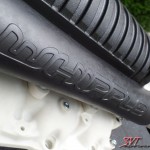
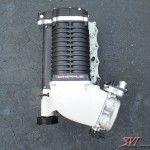
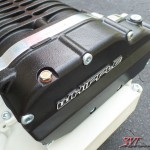
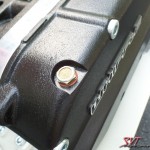
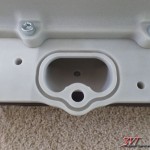
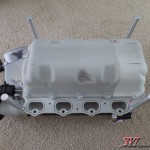
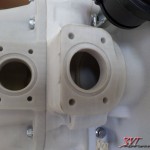
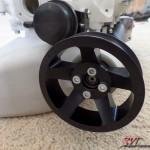
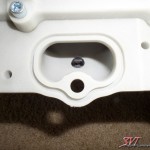
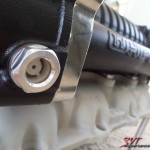
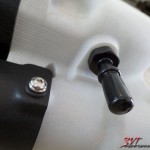
2 thoughts on “Tech: 2015 Mustang Whipple Preview”